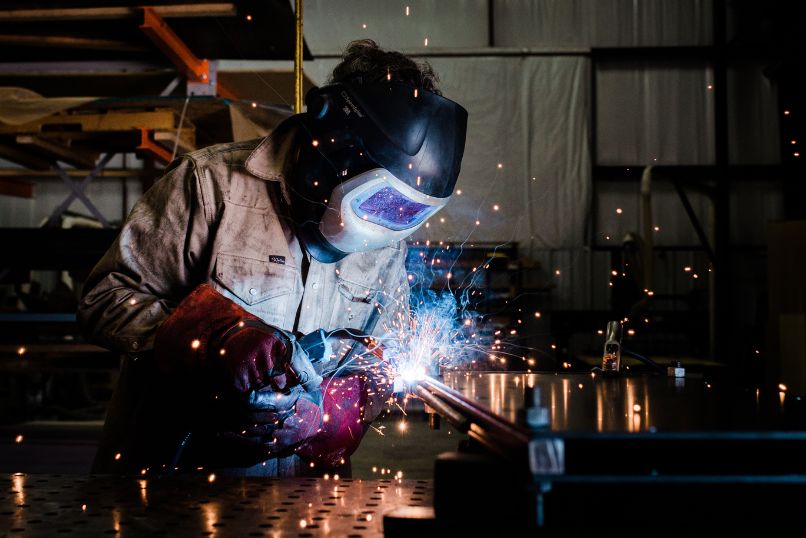Welding stands as a core activity in the manufacturing and construction industries, vital for creating solid, durable joins between metal pieces. With a history as ancient as it is fascinating, necessity and innovation has driven the evolution of welding techniques. Take a look at the different types of welding techniques and how they have transformed the welding industry.
Shielded Metal Arc Welding (SMAW)
Shielded Metal Arc Welding, or stick welding, is one of the oldest and most used welding techniques. It involves using a consumable electrode coated in flux to create an electric arc between the electrode and the metal workpiece. The heat generated from this arc melts the electrode and fuses the workpieces.
SMAW is a versatile technique that you can use on various types of metals, making it popular in construction, repair, and maintenance projects.
Gas Metal Arc Welding (GMAW)
Gas Metal Arc Welding, or MIG welding, uses a consumable wire electrode that continuously feeds through a welding gun, creating an electric arc between the wire and the metal workpiece. The heat generated from this arc melts the wire and the workpiece, forming a weld pool. The welding gun also releases a shielding gas to protect the weld zone from atmospheric contamination. Many welders know GMAW for its high speed and ease of use, making it popular in industries such as automotive and sheet metal fabrication.
Gas Tungsten Arc Welding (GTAW)
Also known as TIG welding, gas tungsten arc welding utilizes a non-consumable tungsten electrode to create an electric arc between the electrode and the workpiece. Welders may use a filler rod to add material to the weld if necessary. GTAW produces high-quality, precise welds and is common in the aerospace, automotive, and bicycle manufacturing industries.
Flux-Cored Arc Welding (FCAW)
A variation of both SMAW and GMAW techniques, Flux-Cored Arc Welding, uses a continuously fed tubular electrode full of flux to create an electric arc between the electrode and the workpiece. The flux creates a shielding gas, eliminating the need for an external gas supply.
FCAW is common in heavy industries, such as shipbuilding, due to its high deposition rates and ability to weld thicker materials.
Plasma Arc Welding (PAW)
Plasma Arc Welding utilizes a highly concentrated and electrically charged gas to create an incredibly hot plasma arc that melts the workpiece, fusing it. This technique works well for precise welding of thin materials such as titanium or stainless steel. PAW requires a high level of technical skill but produces strong, clean welds, and is common in industries such as aerospace and electronics.
These different types of welding techniques have evolved to meet the demands of various industries. We can expect to see even more innovative welding techniques being developed and implemented in the future as technology continues to advance. Each technique has its unique strengths and applications, whether it’s stick welding or plasma arc welding, making welding an essential aspect of modern manufacturing and construction.
Wieland Diversified can provide you with the highest-quality metal products for all your welding needs if you’re looking for a metal alloy supplier. Visit our website to learn more about our services and products.

